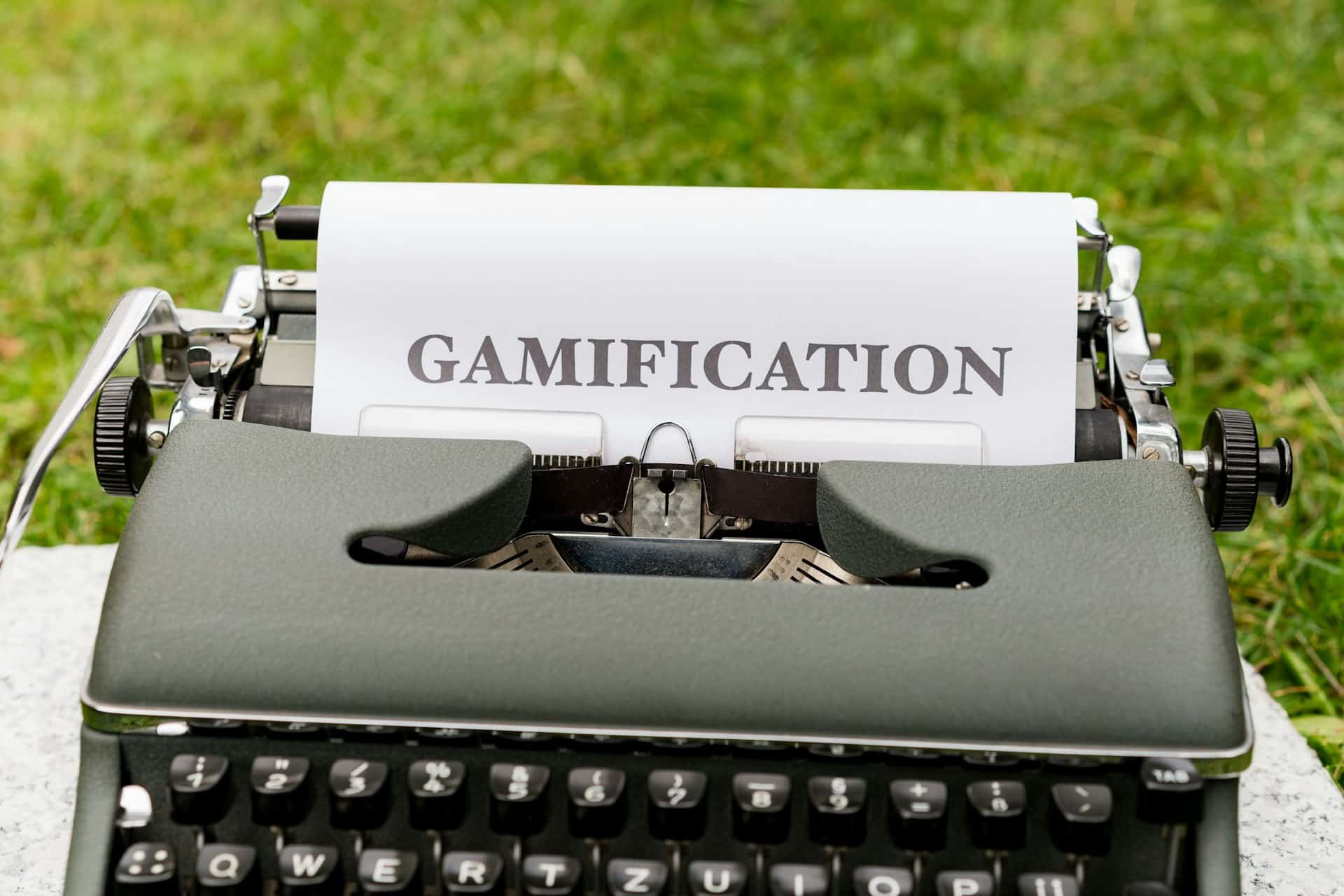
With competition rife in every industry, vendors are always looking for new ways to keep consumers engaged and loyal. Points, badges, progress tracking and levelling up have been used in mobile games for years already. The term ‘gamification’ is the concept that these mechanics are now spreading further afield to fitness apps, eLearning platforms and online casinos. Here’s a deeper dive into why gamification works in these industries and how the different mechanics benefit the user and the vendor.
Why Gamification Works
The goal for any business is to grow and retain its customer base. Employing gamification mechanics in their apps and on their websites works to keep customers engaged longer.
The Psychology Behind Gamification
Gamification promotes engagement and retention by using mechanics such as rewards, badges, points and social recognition, which release dopamine in the brain.
Why Progress and Recognition Drive Engagement
Clear goals and visible progress create a sense of accomplishment and competence. The user can see that they’re improving, advancing and levelling up, which also inspires them to continue using the app.
How Businesses Across Industries Use These Tools
The primary purpose for businesses to rely on gamification mechanics is to keep the user connected with their app and not move to a competitor. Industries that use these tools to drive retention include:
- Fitness apps: Use badges, progress tracking, challenges, leaderboards and streaks.
- Retail: Loyalty points, shopping missions, spending milestones, rewards and discounts.
- eLearning: Points systems, progress bars, leaderboards, quests and certificates.
- iGaming (online casinos): Play credits, trophies, leaderboards, jackpot meters and in-game rewards.
Points and Scoring Systems
Earning points is a common way to keep users engaged. Once collected, it’s hard for a user to want to change to another vendor, as they’ve spent so much time and effort to get where they are. It’s a surefire way to keep users connected.
How Points Create Instant Feedback Loops
Points provide an immediate, tangible acknowledgement of a user’s progress. This feeling is a positive reinforcement that motivates continued engagement. The instant action of earning points releases dopamine, creating a sense of satisfaction and encouraging repetition of the behaviour to get even more points.
The loop is simple: action → reward → repeated action.
Industry Examples
- Fitness: Apps like Garmin and Coros that are connected to a user’s watch count steps walked or miles run and accumulate those over a period (usually month to month). Leaderboards show where the user is at that exact time.
- Retail: Global clothing retailer H&M offers its customers a points system where they earn one point for every dollar spent. Once they reach 200 points, they’re given a $5 discount on their next purchase.
- eLearning: Duolingo provides points to students as they pass through various levels of language learning. The points convert to real-life Common European Framework of Reference for Languages (CEFR) levels, allowing the student to understand where their proficiency is on a global scale.
- iGaming: BetMGM Casinos offers iRewards Points on every bet placed across slots, table games and sportsbook. These points accumulate to unlock membership tiers and can be converted to free bets or bonuses.
The Downside of Points Collection
The feeling of achievement when receiving points can get addictive. If the action that generates the points is straightforward, the user could spend hours or even days performing these actions to earn more points.
Badges and Achievements
Earned badges are a way for users to celebrate and publicly display their achievements. As personal milestones, badges provide tangible markers of progress and accomplishment.
Badges can be used to encourage peers to compete to earn the same ones or can be displayed to demonstrate authority in specific areas. People tend to follow or trust someone who has been rewarded for their achievements.
Examples of Badge Offers
- Fitness: At the start of every month, Garmin offers its users a selection of badges to strive for based on completion of time, step or mileage goals. There are also pop-up badges, like doing an activity on New Year’s Day. The more badges you earn, the higher your public badge level is.
- Retail: Starbucks Odyssey is a program that was trialled to reward customers for performing specific tasks like trying new menu items or visiting different stores. The badges are linked to its loyalty program.
- eLearning: Duolingo, as well as its points system, offers learners the chance to earn limited-edition badges by participating in live sessions and special challenges.
How Collecting Achievements Increases Long-Term Retention
It takes time and usually completion of specific tasks to earn these badges. Switching to another vendor would mean losing them and having to begin again. For example, if a person’s Garmin watch wears out and they consider changing to a competitor like Coros or Fitbit, they’d have to start again at level 1 and re-earn badges. For many, that may feel like a non-negotiable reason to stay with Garmin.
Progress Tracking and Levelling Up
Progress bars provide clear, visible indicators of progress and show users how close they are to their goals. The ability to track progress and growth is yet another dopamine-driven reward response that encourages continued effort.
Tiers break things into structured stages, each one celebrating mastery and achievement. Users are motivated to reach higher tiers as each level unlocks something new, which incentivises and promotes further engagement.
Unlockable content is like a secret reward that excites the user and motivates them to strive to open it. The thrill of discovery encourages the user to keep going, even if they feel it’s too difficult. If the unlockable content is promoted as a scarcity item, it further fuels the need to get there.
The Level-Up Motivator
Levelling up works so well in smartphone and online games that it’s only natural that it would transfer to gamification. Levelling up is one of the easiest ways to keep users loyal, as the work they’ve done to get to those higher levels can’t be replaced. Switching to another vendor resets levels to one.
Fitness apps use levelling up to encourage healthier habits—for example, improving VO2 levels or lowering heart rate over time. This progression proves to users that the app has their best interests at its core.
Levelling is commonly found in online casino platforms. As this LeoVegas honest review highlights, the casino’s 99-level VIP programme is one of the more elaborate loyalty systems in online gaming. Players earn points automatically by placing real-money wagers on casino games. As VIP players accumulate points, they progress through the levels, unlocking better rewards and bonuses. As they get to the higher levels, they benefit from exclusive event invitations and faster withdrawals.
The Benefits and Risks of Gamification
Gamification gives consumers something to strive for. However, there needs to be a balance.
Gamification Benefits
Gamification mechanics benefit the consumer and the vendor. From the consumer’s point of view, they’re motivated to unlock rewards, earn points and get to higher levels. However, there are also additional benefits. For example, fitness app users improve their health as they unlock levels or earn badges.
For the vendor, this promotes engagement and fosters loyalty. The more benefits the user can see, the more likely they are not to go elsewhere.
Gamification Risks
Some consumers may get addicted to earning those extra points, going for that almost unachievable badge and spending more money to get to that next level. These behaviours can lead to dependency, overspending and burnout. Dopamine addiction, where the person gets so distracted by their need to feel good, can be detrimental to their everyday activities, like going to work or taking care of their families.
The concern for the vendor is that if the consumer doesn’t achieve their goal, they may determine that what’s on offer isn’t possible for them and look for alternatives. Vendors need to be vigilant so their efforts don’t lose impact if the rewards feel meaningless or if certain mechanics are overused.
Wrapping Up
No longer confined to smartphone games, gamification mechanics are used in many other industries, from education to online casinos. The ultimate goal is for vendors to boost retention. If the customer is engaged, whether it’s by earning points, being awarded badges or reaching higher levels, they’re likely not even considering switching to a competitor. It’s a win for everyone as the customers’ dopamine levels are increased and the vendors’ retention goals are met.






